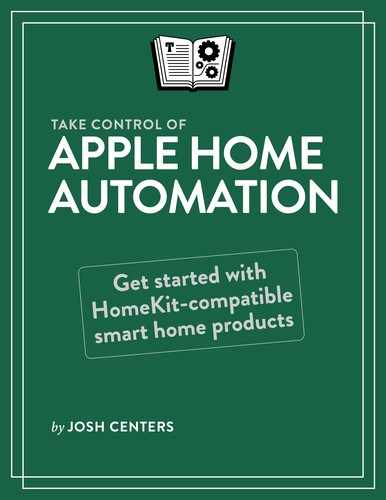Introduction
If you’ve never used home automation, it can seem like a gimmick at best, and a potential nightmare at worst.
Untold numbers of movies and TV shows have explored the potential horrors of home automation. In an episode of “Mr. Robot,” a woman is driven from her home after hackers make her apartment go haywire.
Even if complete takeover of your home by revolutionary hackers is far-fetched, problems could be annoying. By definition, home automation takes place in your personal space, and buggy code or simple human error, even in Apple’s somewhat simplified offering, could have a real impact on your life. It’s prudent to think carefully before diving in.
But once you begin to use home automation, you start to see the everyday problems it can solve. Home automation may not change your world, but it can remove friction from your daily existence. Think about how many times a day you turn lights on and off, set your thermostat, adjust a ceiling fan, or check door locks. Even if it’s just a matter of making sure everything is as you want before bed, that’s a win. It can also compensate for the thoughtlessness of others—those people in your household who forget to turn off lights or check that the fridge is closed.
When you set up home automation intelligently, you’ll feel empowered, not overwhelmed. For Apple users, HomeKit offers the easiest, most secure way to achieve that goal.
Maybe you picked up this book because you’re curious about home automation, but you’re hesitant to try it yourself. Here are some common misconceptions that surround home automation:
It’s a gimmicky luxury: Is home automation a luxury? Sure! So are electricity, computers, and the internet, depending on your point of view. And, yes, it can be gimmicky (flashing dance lights!). But it can also be a powerful tool that can solve real problems around your house (say, if you’re stuck in a chair with an injured leg and just want to turn the stupid light off). It’s all in how you implement it.
It’s expensive: You could easily spend several thousand dollars on home automation, but spending that much is entirely unnecessary. Even an inexpensive smart outlet (usually $50 or less) can solve a lot of problems around the house.
It’s complex: There’s a mistaken belief that you have to automate your entire home before home automation pays off, but that’s not true at all. You’d be surprised at what just a few devices and scenes can accomplish. In fact, I recommend starting simple to get a feel for it.
I rent: There are some HomeKit accessories that you permanently install in your house, but many of them plug into an outlet or use batteries.
I’ll lose control of my house! It’s true, if you go hog-wild on devices and automations, you can suffer what I call “haunted house syndrome,” but any sufficiently powerful tool can be a hindrance if used incorrectly. Follow the methodology I lay out in this book, and you’ll always feel in control.
Hackers will take over my home! Any time you connect a device to the internet, there is a real risk that bad actors could use it against you. Compared to some smart home platforms, Apple’s HomeKit offers superior security, backed by two-factor authentication, but of course, nothing is perfect.
Home automation with HomeKit is not only safe, but potentially life-changing, and it’s only as complex and as expensive as you want it to be. In other words, it’s like any other kind of computing! Let’s start making your life easier…
